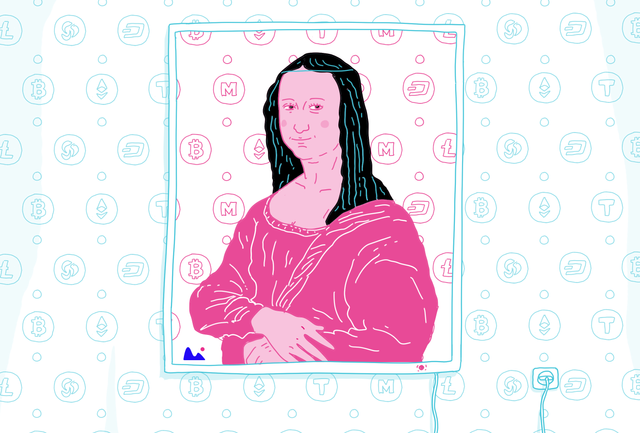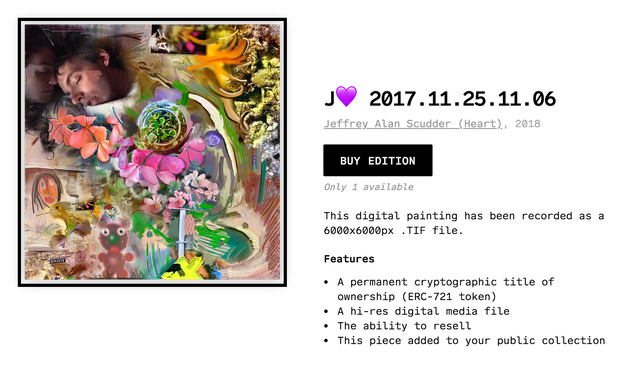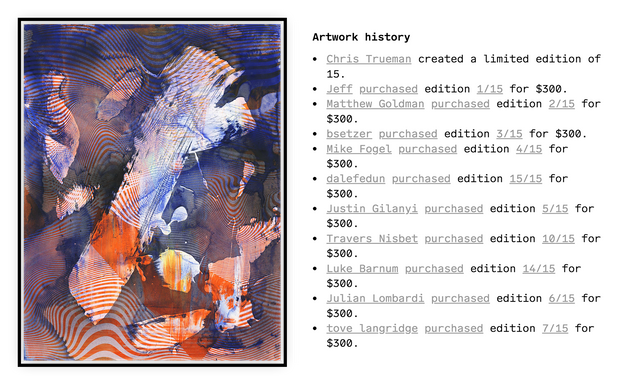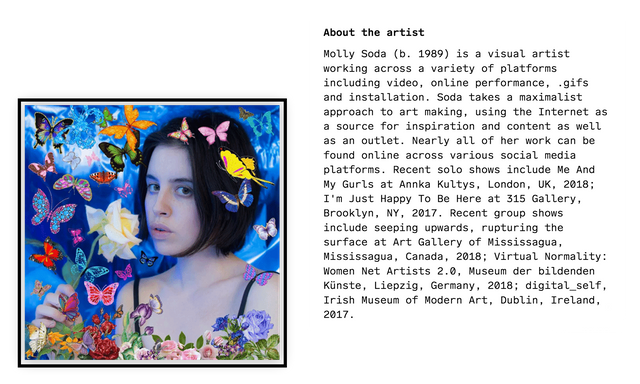A Healthier Art World Powered by Blockchain [Spotlight on Digital Objects]

A New Creative Economy
Attention towards the art world from the blockchain community has absolutely skyrocketed over the past year with more and more initiatives looking to revolutionize one of the longest-standing asset economies. There’s a lot to potentially change, from the ways in which art is produced to the systems in which it is valued, distributed, and protected. Decentralization stands to nurture a more equitable and efficient industry, and today, we’ll be discussing with one of the new companies looking to mobilize that change - Digital Objects.
Digital Objects is a new marketplace and collecting platform for digital artwork, offering a unique way for young artists and collectors to take advantage of decentralized platforms. We had an opportunity to interview the team behind the initiative so let’s jump right in.

The Creative Crypto (CC): Hello Digital Objects team! Tell us a bit about yourselves, your backgrounds, and why you got into the blockchain space.
We’re a small team based in Downtown Los Angeles excited by the potential applications of new technologies to the art world and the broader influence of art and aesthetics on tech and design. One of our co-founders, Alex, makes digital and coded art and is the founder of Curate LA, an interactive map of art and cultural events in Los Angeles.
We believe in the promise of the ERC-721 standard -- also known as non-fungible tokens (NFT). NFT’s allow us to establish the authenticity and, most importantly, scarcity, of digital items. This means that true ownership of digital items is possible for the very first time.

TCC: What are the key pain points you’re trying to solve or innovate on in terms of creative practice and industry?
Digital Objects aims to serve artists, collectors, and gallerists. Each is subject to its own obstacles in today's art market.
For artists, it’s hard for most to maintain a sustainable practice. Artists need and deserve more ways to generate revenue from their work. Our platform makes it simple for them to issue and sell their work to an enthusiastic, Internet-native community of collectors around the world.Artists also rarely benefit from their own secondary markets. We strongly believe they should receive guaranteed royalties when their works are sold between collectors. Each time an artist’s work is resold, an Ethereum smart contract-enforced royalty will be automatically disbursed back to them.
Finally, new media artists are attracting huge audiences online, but there’s no straightforward and scalable way to collect their art and support their craft. The ERC-721token standard establishes scarcity and authenticity of digitally produced art, so artists are able to confidently sell digital limited-editions to their fans.
Now onto the collectors. Younger collectors are almost entirely priced out of the art market. They’re eager to collect, but the traditional market and gallery system favors ultra-wealthy, socially-connected, and geo-mobile buyers. Digital Objects democratizes the art buying experiencing by making available gallery-caliber, limited-edition artworks at affordable prices to potential collectors all around the world.
As a result, collectors have a difficult time establishing a relationship with an artist because of the high barrier to entry of most artist’s markets. By lowering that bar, collectors and fans can participate in an artist’s career and support their craft in a real way.
Lastly, this type of platform serves as a robust solution for galleries. Smaller galleries are struggling to survive. Due to changing market dynamics, rising costs, and an aging traditional collector base, the art market is consolidating into a small set of powerful galleries. Digital Objects provides a simple solution for galleries to certify digitally-produced art, while gaining access to non-local collectors. A Digital Objects gallery page is an online extension of the physical gallery, making its art viewable to anyone, anytime, anywhere. Attracting new clients is imperative for a gallery’s long-term sustainability, and Digital Objects offers galleries exposure to a digital-native group of collectors.

CC: If artists start to utilize these applications, what does a creative future look like?
We understand that, even for artists with career momentum, it can be difficult to comfortably sustain a creative career. We hope that Digital Objects will provide a new revenue stream for artists and help subsidize their pursuits.
From a technical point of view, digital art display devices are improving rapidly, with established manufacturers like Samsung entering the market alongside smaller companies like Meural and Depict. We believe that screens will continue to proliferate and will increasingly be used to display art in new and wonderful ways. Pieces purchased via Digital Objects may be legally displayed on these devices (for non-commercial purposes).
Apple recently showcased its improved ARKit 2, which was the company’s primary focus at this year’s WWDC. While the technology is nascent, AR opens the door for a host of novel art experiences, none of which were possible until recently. We look forward to exploring the new opportunities presented by AR.

CC: Tell us about the platform’s status now and what we can look forward to in the next few months.
We’re currently in public beta, so feedback from the community is especially valuable during these early days. We’d love to hear from The Crypto Creative readers about what they’d like to see from us.
As Digital Objects evolves, we’ll offer more selling features for artists and collectors and more varied ways to display and interact with artworks. For instance, this week we introduced a “back of the canvas” experience exclusive to collectors, which is a unique feature only available on Digital Objects.
Moving forward, we plan to focus on more partnerships with galleries and institutions, live events and auctions, and most importantly, the debut of many more talented artists.
CC: And what are the next steps for anyone looking to get involved?
If you’re an artist interested in issuing limited-edition digital works of art on Digital Objects, please apply here and our curatorial team will review your application. We’re carefully curating the art that’s exhibited on Digital Objects and will be debuting exciting new artists every month.
If you’re a gallerist interested in partnering with Digital Objects, please email us: [email protected]. We’re excited to partner with galleries and institutions to provide a simple solution for the sale and certification of digitally produced art.
A tremendous THANK YOU for the Digital Objects team for talking with us and personally presenting their work.
Website: https://digitalobjects.art
Online FAQ: https://digitalobjects.art/faq
Twitter: https://twitter.com/dobjectsart
Instagram: https://www.instagram.com/dobjects
Medium: https://medium.com/digital-objects
Newsletter: Link

Posted from my blog with SteemPress : https://thecreativecrypto.com/847-2/
I really love the "back of the canvas" experience. A phenomenal idea. Myself and my husband @joechiappetta are very active in the crypto art space. Being that we live in Pasadena, CA, it's exciting to see an LA based group like Digital Objects innovating in such exciting ways. We hope to connect with them!
Nice
Indeed
Great interview with Digital Objects! This quote really stood out to me...
It's not just about democratizing the creators, it's about the other side of the equation as well. The buyers, curators and collectors. Making a quality collection more accessible to young enthusiasts!
@creativecrypto wow this is really interesting article, great post! It's so cool how Digital Objects has evolved into "selling features for artists and collectors and more varied ways to display and interact with artworks" such as “back of the canvas” experience for example. Click to pay in order to see back side reveal. Wow! Thanks for sharing, upvoting your post to support!
Now onto the collectors. Younger collectors are almost entirely priced out of the art market. They’re eager to collect, but the traditional market and gallery system favors ultra-wealthy, socially-connected, and geo-mobile buyers. Digital Objects democratizes the art buying experiencing by making available gallery-caliber, limited-edition artworks at affordable prices to potential collectors all around the world.
As a result, collectors have a difficult time establishing a relationship with an artist because of the high barrier to entry of most artist’s markets. By lowering that bar, collectors and fans can participate in an artist’s career and support their craft in a real way.